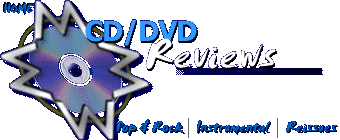 
|
||||
|
|
SU ANDERSSON |
|||
|
mwe3.com presents an interview with
Su Andersson: I have two older sisters, my mother was a child minder, my father a structural engineer. I listened to my Sister’s music, i.e. the Beatles' Sgt. Pepper and I still have a vivid memory of the back of that album cover with the lyrics. I was really young but I learned all the lyrics and harmonies. I got my first guitar at 12, from my sister's boyfriend. He taught me "House Of The Rising Sun", and there it was. I listened a lot to Leonard Cohen and Elton John. My first album though was Cosmos Factory by Creedence Clearwater Revival. I worked as an architect for 35 years, both as partner and CEO in a limited company, running a business of my own and also being employed for a lot of years. During the years, I played in different constellations, and different connections, despite the years between 40-50, when I didn’t sing or play anything at all. I hadn’t always planned to go back to, or work with music as my main occupation, but I told my last boss, when I was employed by him, that I didn’t have any special dreams about houses I wanted to design, but I really loved to go work and collaborate with my nice and competent colleagues. But I had a lot of songs that were still unwritten and still to come... So, he was prepared that that day could come. Nowadays, I don’t work any longer with architecture, sometimes I can give some feedback when needed. I guess I would say being an architect was a good time. I’ve never considered myself as a career woman, but I’ve, most of the time, really liked to go my work and to solve problems, in smaller and larger projects, together with my colleagues. mwe3: Where did you grow up and where do you live now and when did you learn how to sing, play guitar and record music? What guitars are you playing on your debut album Train Stories and how do you practice your instrument? Do you spend more time playing guitar, writing music, practicing voice training or writing lyrics?
I participated in a play as a band member in the 1980’s and that band continued to play for 15 years. I started to write my own songs. In the early 1990’s, I participated twice at two week-long workshops for musicians in Roskilde, Denmark, and then we performed at the Roskilde Festival. I learned a lot during both the work with the theatrical performance and the workshop lead by professional musicians. One thing was to be keen about what other people say. I’ve always loved to sing, but my first singing lessons did take place in New York about 2013, at the Voice Academy NYC. I went there for a couple of hours, and then after about a year, I went back, and now I go there whenever I’m back in NY. I started to take singing lessons in Gothenburg when I ended my work as architect, that is, in Spring 2019. It’s been great! My singing teacher teaches me technics, but also listens to my song ideas so I get a lot of good advice! So, she was worth her price in gold during my time recording Train Stories. The guitar I use on the album is an acoustic one, a wonderful Taylor GS Mini. I practice my instrument far too rarely! I should/would/could spend a lot more time with my guitar. Okay, it’s not getting dusty, but… I spend some time in between testing my guitars, both the acoustic and also an acoustic-electric Taylor that I have got, together with a few pedals, to try and test different sounds. I spend quite a lot time on writing both lyrics and music, a mix of words and expressions that makes a fast visit to my head, then I have to put them down, and then hours and hours of adaptation and arrangement.
Su Andersson: Well, the challenges I faced were really nice! Both in working with two producers and with all the brilliant musicians… Why 2 producers? It started with when I asked Henning, considered not only by me as one of the best guitarists in Sweden, if he would like to participate with a guitar on one song. Since he’s a part of my family I didn’t have to go so far to ask, on the other hand I didn’t want to be too pushy. It’s also a thing with integrity. Luckily he said yes, sure, how fun, and at the same time he said that we could make some recordings in his studio. He’s sharing a studio and rehearsal space with another band in Gothenburg. And so we decided to make three of the songs there; together with musicians that also play in his band. We didn’t know then or spoke at that time if Henning would participate on most of the songs on the album. Frida… I heard from different sources, that she was an excellent young recording engineer and in my work I also wanted someone to cooperate with on planning the recording, the arrangements, which instruments, what sounds, parts to sing or not. And she was really the one... from start to the finish! She works at the studio Svenska Grammofonstudion in Gothenburg, which is a great studio in many ways, where there are opportunities and conditions to make a good work. We planned carefully; I did that with Henning as well. Then I contacted musicians that I wished to participate and in the cases where I didn’t have a name, I had some recommendations. For instance, Maja Molander who plays the cello, was recommended by Martin Schaub. Some of them stayed for a day or two, and some of them just popped in and played their part. Incredible professionals filled with warmth and feeling and a very good attitude for what they were going into. The finishing of the recording was handled with the same care as the beginning and the recording itself. You should have seen my Excel document, with date/time schedule/artists/parts singing and so on, and so on… Still we kept the feeling. Went I first met Frida in the studio she mentioned that she sometimes used to work at Hansa Studios in Berlin. I just looked at her and said, next time I want to come! This was like some kind of fairytale or a dream-come-true-moment for me! And then she actually found a day that suited us both and booked the studio. So we went there for one day’s work. Lived in two rooms above the studio. Frida and I then worked together with Nanni Johansson, technician at Hansa Studio, and it was so much fun, so much concentration, so much something-in-the-air-and-rooms. We recorded three songs, two of them are on the album. And it was also premier for me to play timpani. And yes, Bowie was around there for a while, others who were seen there include Brian Eno, Iggy Pop, U2, Nick Cave and the Bad Seeds, Depeche Mode, Siouxsie and the Banshees.
mwe3: Train Stories blends folk, rock and Americana style music throughout the album. Are you more into in folk or rock? I guess rock sound needs more musicians to give it that harder edge while folk is a more personal sound? Su Andersson: I’ve been listening a lot to both rock and Americana, but I don’t see myself as a rock artist. The songs I write are meant to be possible to perform for me with song and a guitar, but I also see what you can do live with all the great musicians on the recorded album and when I played with a band at my release concert; you can find videos from that on my YouTube-channel. I think it’s great that songs can sound so different with different constellations, and still keep a personality. mwe3: Why did you start the train trip in Chicago and not in New York? Tell us more the two different routes you took and also about your travels to New York, the state and the city. What part of New York do you like best?
There were sceneries I’d never seen before! The cornfields, the huge silos, the Rocky Mountains, Colorado River… Passing the great plains, industrial areas, agrarian societies, infinite landscapes, junk yards, Sierra Nevada and the Pacific. And all the people, all of different kinds. Honeymooners, retired couples from the U.K., Ohio, Nevada, backpackers from Switzerland, vets from Virginia, Amish people... on every train, going from or to some fair somewhere else, people on their way to work or to visit their family. The travel eastbound gave me some similar sceneries but was also different. The great, infinite landscapes, yes, but also dramatic, another drama compared to the Rocky Mountains, as the dry landscapes in Arizona and New Mexico. I was, during the trip, astonished by the different kinds of habitations I saw, and of course the poverty I saw in the great cities, though I’ve seen it before. My travels to New York? Wow, that’s an interview in itself. I was really grown up when I came there the first time, I was about 50. Now I’ve had more than 10 visits there! I’ve been there alone several times. I been there with my husband, with my daughter, with my son, and with some friends. I like to live in different parts of New York when I get there and I love to walk around, who doesn’t? I don’t visit every must-see-place, though I always go back to High-Line for a walk. For me it’s the best, just walk around and discover, for me, new surroundings. And of course, I do go back to other places that I love. Bryant Park, Brooklyn Bridge Park, Central Park, Jimmy’s Roof Top bar on Grand Street in SoHo, WNYC Transmitter Park, I could mention 20 more… at least. I eat bagels and I take singing lessons. And walk. Visit roof top bars. And I play at open mics. The ones that are arranged by “Inspired Word”. The first time I did, it was such a great and nice experience for me so I started an Open Stage when I got back to Gothenburg, and I’ve been running it together with some friends for seven years now. My favorite parts of New York? Well, I can say it’s not Times Square. I’d say it’s Greenpoint, parts of central Williamsburg, East Williamsburg, the Lower East Side, Park Slope, the West Village, Tribeca, Upper West Side, parts of Harlem… And yes, the Meatpacking district… mwe3: How does “For Roses And Rain” introduce the album? You talk about finding your ticket and boarding the train. Is the song an overture or intro about the trip you took? Su Andersson: It introduces the album because I actually started to write it as a song long before I was on my way. But I was on my way mentally. Not physically. Haven’t thought about overture, but I guess it could be. Sounds nice. Likewise, it could also be an intro, the beginning of the rest. Hmm, overture sounds good. We’ll go for that.
Su Andersson: I wrote a lot during the trip, while the train was moving. Mostly very small parts, both when it was about lyrics or music. I had a traveler guitar with me, a small, really good guitar. I mean good, and I could connect it to the smallest amplifier I’ve seen. But it’s easy to carry around, and I had to be kind of light while travelling. So, I could play without disturbing anyone. And while I had my own compartments, I also could record small sequences on my iPhone to keep. That was very important. Su Andersson: Yes, it sure closes the journey. The days in New York were just like a bonus, like coming home. I told people I met during the trip that I longed to come to New York to rest. The shook their heads and laughed… I’ve been seeing the cornfields and the black cattle in many states, also in the beginning of the travel, but this was some kind of outline, it was all soon coming to an end. And I wanted to remain, though I longed for New York as well. Su Andersson: Yes, it says something of the feeling when you want to travel by yourself, you’d choose it and you don’t want it to be any different, but maybe you send some thoughts to the ones at home. Or, maybe it’s not just documentary stories I’m telling, maybe it’s more like based on true stories. No, that’s not true, I’d say they are more or less true stories, added with some poetic ambition here and there.
mwe3: I guess you’re disappointed you can’t bring this wonderful album to the concert stage. How has the pandemic affected you and your music in 2020? What do you forecast about when your will start rocking out live again? Have you done some shows with your band or do you do acoustic solo sets live? Su Andersson: It sure has affected me as most of the artists around the world. I’d planned performances in Norway and Sweden, but they were all cancelled, no surprise. I was lucky enough to be able to do show with a band when I released my album in September. Then the restrictions were max 50 persons, with distance of course, now it’s 8 people, and everything’s online. Instead of playing and perform I’ve started to write songs for my next album - it’s not called Train Stories pt.2, that will be another story / record, and I’ve also had time to work with marketing concerning Train Stories. And I’m not doing that by myself, I'm lucky to work with the most splendid people! Hopefully I’ll be on the road during the Autumn of 2021, that is outside Sweden. I guess I’ll have some small performances in the spring, outside is fine, but it’s also nice if you have a little more than 8 people in the audience. I’m looking forward to do shows both with a band and by myself. mwe3: So 2020 seems more and more like as you sing, “yesterday’s papers dancing in circles”. What’s your current music plans back in Sweden and what about future plans about coming back to the States again? Where will you go when you make your next album?
Photos / Video credits:
|
|
|||
|
||||

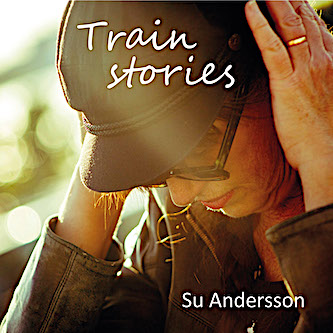 Sweden’s fascination with all things Americana music related continues to produce impressive results, case in point being Train Stories, the 2020 debut album by singer-songwriter Su Andersson. Recorded in Gothenburg, Sweden and at Hansa Studio in Berlin, Germany and co-produced by Ms. Andersson with Henning Sernhede and Frida Claeson Johansson—Train Stories offers ten tracks that clock in at 34 minutes. On the more rock-based tracks, Henning’s sonically searing electric guitar work sounds impressive and perfectly fits within Ms. Andersson’s adventurous songs, which relies equally on both mood and melody. Train Stories starts off with the introspective lead-off track “For Roses And Rain”, yet by the time track 2, “On The Train Part 1” kicks in, the track reveals Su’s rock and roll heart. The uptempo energy of that track is reprised again with the album closing “On The Train Part II”, making both songs a definite highlight among many here. On the more rock-based tracks, Su’s voice resonates with a jazzy feel as she sings her way through her music menagerie. For those wondering where Su got the idea for the album, Train Stories is actually a sonic trip-tik soundtrack documenting Su’s cross country train ride of America from 2019. On her website she even has a map of where she stopped as she took the train from across the USA to California and as she tells RMR, "The train trip was Chicago – California (San Francisco – Los Angeles) – Chicago – New York; first westbound, then eastbound." Other highlights include the upbeat country-rock vibe of “The Dark Blue Of Mine”, as well as the spooky yet picturesque vibe of the piano-driven “Early Morning Alleys”. A number of musicians fill up the soundstage, giving the album an inviting Americana folk-jazz meets Euro-rock sound that should appeal to a range of listeners. Featuring Su’s English vocals (with a perfect hint of a jazzy sounding Swedish accent), Train Stories is well recorded and the CD booklet features a number of photos with all of Su’s song lyrics printed in English. A rising star on Sweden's current singer-songwriter scene, Su Andersson’s Train Stories is a pick to click for discerning fans of the new pop-rock.
Sweden’s fascination with all things Americana music related continues to produce impressive results, case in point being Train Stories, the 2020 debut album by singer-songwriter Su Andersson. Recorded in Gothenburg, Sweden and at Hansa Studio in Berlin, Germany and co-produced by Ms. Andersson with Henning Sernhede and Frida Claeson Johansson—Train Stories offers ten tracks that clock in at 34 minutes. On the more rock-based tracks, Henning’s sonically searing electric guitar work sounds impressive and perfectly fits within Ms. Andersson’s adventurous songs, which relies equally on both mood and melody. Train Stories starts off with the introspective lead-off track “For Roses And Rain”, yet by the time track 2, “On The Train Part 1” kicks in, the track reveals Su’s rock and roll heart. The uptempo energy of that track is reprised again with the album closing “On The Train Part II”, making both songs a definite highlight among many here. On the more rock-based tracks, Su’s voice resonates with a jazzy feel as she sings her way through her music menagerie. For those wondering where Su got the idea for the album, Train Stories is actually a sonic trip-tik soundtrack documenting Su’s cross country train ride of America from 2019. On her website she even has a map of where she stopped as she took the train from across the USA to California and as she tells RMR, "The train trip was Chicago – California (San Francisco – Los Angeles) – Chicago – New York; first westbound, then eastbound." Other highlights include the upbeat country-rock vibe of “The Dark Blue Of Mine”, as well as the spooky yet picturesque vibe of the piano-driven “Early Morning Alleys”. A number of musicians fill up the soundstage, giving the album an inviting Americana folk-jazz meets Euro-rock sound that should appeal to a range of listeners. Featuring Su’s English vocals (with a perfect hint of a jazzy sounding Swedish accent), Train Stories is well recorded and the CD booklet features a number of photos with all of Su’s song lyrics printed in English. A rising star on Sweden's current singer-songwriter scene, Su Andersson’s Train Stories is a pick to click for discerning fans of the new pop-rock. 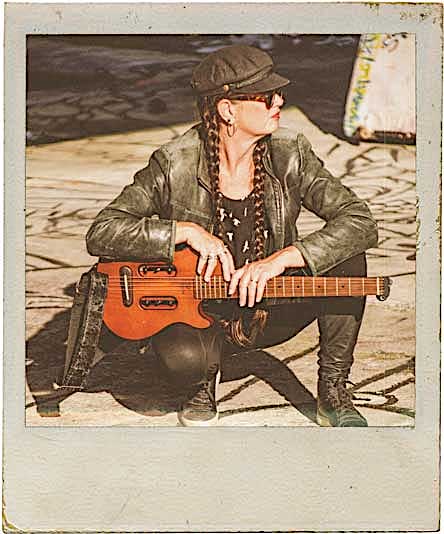 mwe3: Tell us something about your background and your early musical influences. You worked in the architecture world for many years and then came back to music? I guess it's a very good career move being an architect in beautiful Sweden, as it offers some of the coolest looking architecture in Europe.
mwe3: Tell us something about your background and your early musical influences. You worked in the architecture world for many years and then came back to music? I guess it's a very good career move being an architect in beautiful Sweden, as it offers some of the coolest looking architecture in Europe.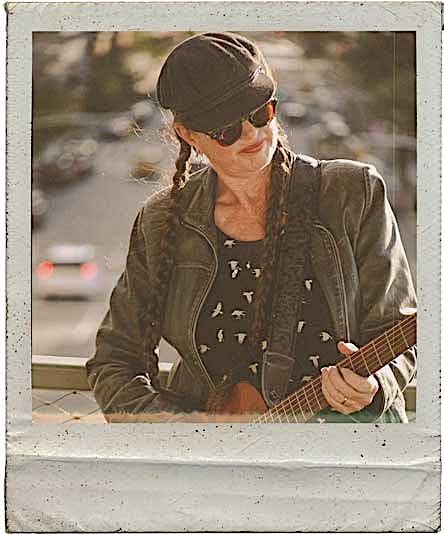 Su Andersson: I was born and raised on the West Coast of Sweden, on the countryside south of Gothenburg, which is the second largest city in Sweden. I still live in Gothenburg, I love living here, I have my family and friends here, it’s near the sea, got good music venues… I long for them to re-open.
Su Andersson: I was born and raised on the West Coast of Sweden, on the countryside south of Gothenburg, which is the second largest city in Sweden. I still live in Gothenburg, I love living here, I have my family and friends here, it’s near the sea, got good music venues… I long for them to re-open.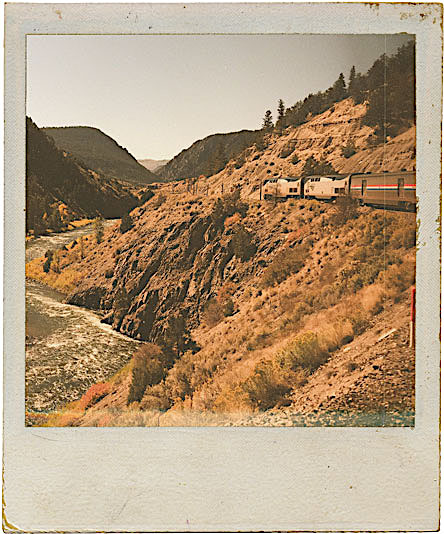 mwe3: What challenges did you face in assembling your band and what was it like working with your producers Henning Sernhede and Frida Claeson Johansson? Why did you choose to work with 2 different producers? Tell us about recording both in Sweden and at Hansa Studios in Germany. I remembered Bowie recorded his Heroes album there.
mwe3: What challenges did you face in assembling your band and what was it like working with your producers Henning Sernhede and Frida Claeson Johansson? Why did you choose to work with 2 different producers? Tell us about recording both in Sweden and at Hansa Studios in Germany. I remembered Bowie recorded his Heroes album there.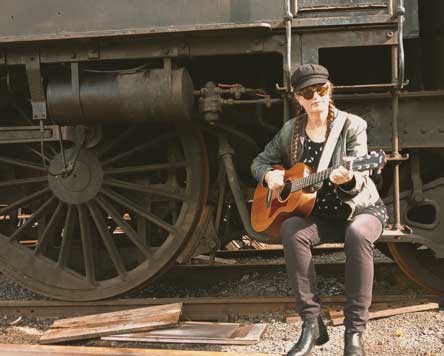 Su Andersson: I’ve been listening to a lot of American artists, singer/songwriters and bands, and I’ve seen a lot of them in Gothenburg, both on a big annual music festival, but also on small venues, most often arranged by the club “Woody West”. When Laura Gibson released her album Empire Builder in 2016, I was stoked with inspiration. I loved the songs but also the thought of travelling by train for days and writing songs while travelling, on my own. And when I decided to quit my job as an architect, I started to plan and see what was possible. I did plan the trip quite carefully, with a good schedule and nice places to stay at stop-overs and so on. I’ve been to the US slightly more than 10 times, I guess 13. New York, New England, California, Texas on separate trips besides the through 15 states train trip. It’s possible Sweden has a wonderful train system, and we’ve got beautiful landscapes and sceneries, sure, but… the Amtrak system was perfect for me. I wasn’t in a rush, I had my own compartment, also the sitting cars worked perfectly. I met a lot of people during breakfast, lunch and dinner.
Su Andersson: I’ve been listening to a lot of American artists, singer/songwriters and bands, and I’ve seen a lot of them in Gothenburg, both on a big annual music festival, but also on small venues, most often arranged by the club “Woody West”. When Laura Gibson released her album Empire Builder in 2016, I was stoked with inspiration. I loved the songs but also the thought of travelling by train for days and writing songs while travelling, on my own. And when I decided to quit my job as an architect, I started to plan and see what was possible. I did plan the trip quite carefully, with a good schedule and nice places to stay at stop-overs and so on. I’ve been to the US slightly more than 10 times, I guess 13. New York, New England, California, Texas on separate trips besides the through 15 states train trip. It’s possible Sweden has a wonderful train system, and we’ve got beautiful landscapes and sceneries, sure, but… the Amtrak system was perfect for me. I wasn’t in a rush, I had my own compartment, also the sitting cars worked perfectly. I met a lot of people during breakfast, lunch and dinner.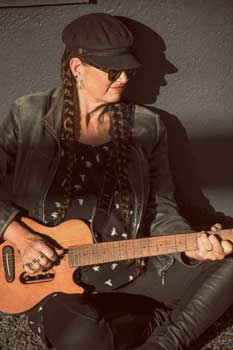 Su Andersson: It started in Chicago because Laura Gibson’s Empire Builder, which I was inspired by, goes between Seattle/Portland – Chicago, so that route was the first in my mind. Then, when I went on researching and studying all the possible routes, I figured out I’d prefer the landscapes that are unfamiliar to me. The great, and I mean great, plains, the Rocky Mountains, the dry landscapes... My first plan was also to go westbound by train and fly to New York from San Francisco or Los Angeles. Then I had time, and you shouldn’t fly that much, so, why not take the train? On my route from Chicago to Emeryville near San Francisco I had the luck to get a family room, a huge compartment with windows on both sides of the train. My choice of compartment was overbooked, so I just “got it”. That’s why I really gazed and gazed through out the window, which I sing about in “On The Train, Part 1”.
Su Andersson: It started in Chicago because Laura Gibson’s Empire Builder, which I was inspired by, goes between Seattle/Portland – Chicago, so that route was the first in my mind. Then, when I went on researching and studying all the possible routes, I figured out I’d prefer the landscapes that are unfamiliar to me. The great, and I mean great, plains, the Rocky Mountains, the dry landscapes... My first plan was also to go westbound by train and fly to New York from San Francisco or Los Angeles. Then I had time, and you shouldn’t fly that much, so, why not take the train? On my route from Chicago to Emeryville near San Francisco I had the luck to get a family room, a huge compartment with windows on both sides of the train. My choice of compartment was overbooked, so I just “got it”. That’s why I really gazed and gazed through out the window, which I sing about in “On The Train, Part 1”. 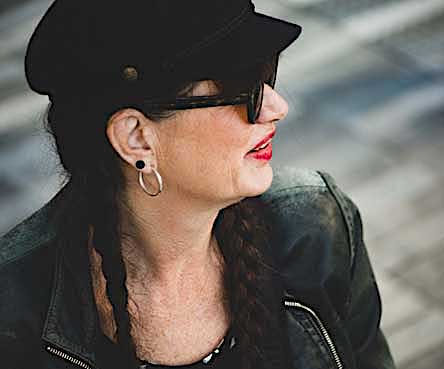 mwe3: The whole album is great but I really like the “On The Train” parts 1 and 2. “Part 1” has a great motion to it and you can almost feel the train moving. It’s got a train feel. Did you write these songs while the train was moving? Also, did you stop off in any cities or did you stay on the train till it reached the West Coast? It took 3 days? Also that track “Part 1" has some great electric guitar work from Henning. Did you tell Henning how you wanted the guitars to sound?
mwe3: The whole album is great but I really like the “On The Train” parts 1 and 2. “Part 1” has a great motion to it and you can almost feel the train moving. It’s got a train feel. Did you write these songs while the train was moving? Also, did you stop off in any cities or did you stay on the train till it reached the West Coast? It took 3 days? Also that track “Part 1" has some great electric guitar work from Henning. Did you tell Henning how you wanted the guitars to sound?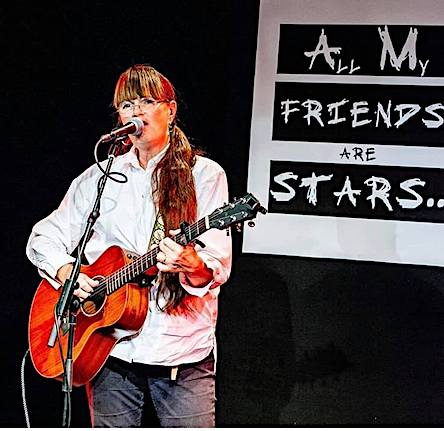 Su Andersson: I remember where I was, no doubt about it! It was when I get off the train at 5 o’clock in the morning in Flagstaff, Arizona! Most of the songs are written in and out from different occasions in specific locations, and yes, I see the places and people every time I sing the song connected. I asked Martin Schaub to join me on this song, and I let him choose how to play his part. It’s just wonderful. Outstanding. The video – I’d been talking to John Peterson, at Future Me Agency in Gothenburg, to make a music video several years ago, but we didn’t make it at that time. Now it was time to ask him again. He and his team, got two songs to listen to, and they wanted to do “Early Morning Alleys”. John had himself make a great part of the train trip I did, a couple of years ago, and he planned to make a documentary about the trip. His film hasn’t been done yet, but he had a lot of footage taken along the way! Together with some of my shootings and photos, and a couple of hours at a train museum near Gothenburg on a nice evening, we made this together. The art director Tim Winter at the agency made the cuttings and put it all together to this gem.
Su Andersson: I remember where I was, no doubt about it! It was when I get off the train at 5 o’clock in the morning in Flagstaff, Arizona! Most of the songs are written in and out from different occasions in specific locations, and yes, I see the places and people every time I sing the song connected. I asked Martin Schaub to join me on this song, and I let him choose how to play his part. It’s just wonderful. Outstanding. The video – I’d been talking to John Peterson, at Future Me Agency in Gothenburg, to make a music video several years ago, but we didn’t make it at that time. Now it was time to ask him again. He and his team, got two songs to listen to, and they wanted to do “Early Morning Alleys”. John had himself make a great part of the train trip I did, a couple of years ago, and he planned to make a documentary about the trip. His film hasn’t been done yet, but he had a lot of footage taken along the way! Together with some of my shootings and photos, and a couple of hours at a train museum near Gothenburg on a nice evening, we made this together. The art director Tim Winter at the agency made the cuttings and put it all together to this gem. 